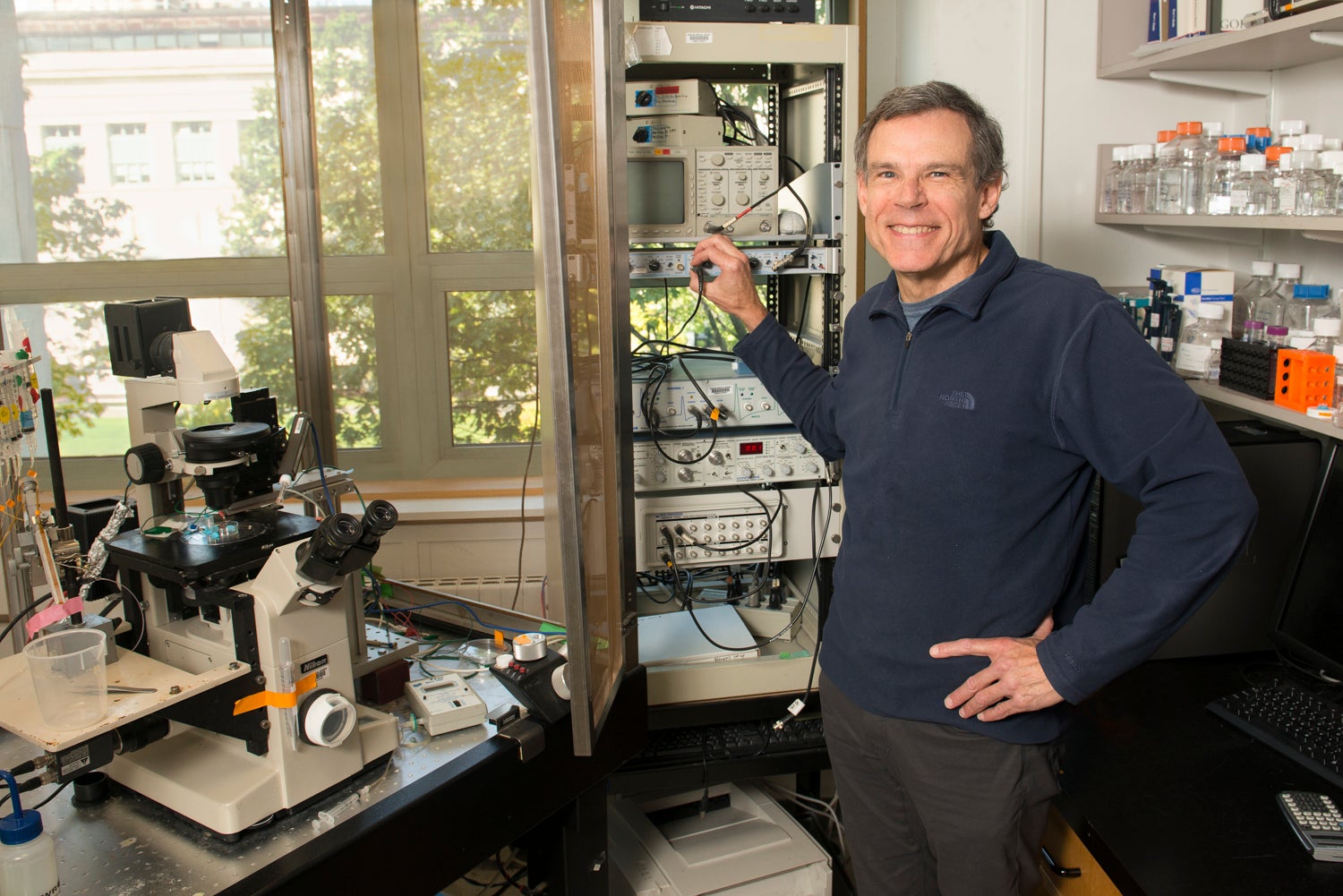
Neurons communicate with each other through electrical impulses. Information is encoded as patterns of “action potentials” – ~1 millisecond long reversals of the voltage across membranes of neurons. Different neurons in the brain fire action potentials with a variety of distinct patterns. The Bean lab seeks to understand these different patterns of firing in terms of the underlying molecular devices – tiny pores in the membrane known as ion channels.
In mammalian brains, each neuron possesses several dozen different types of ion channels. Most of these are closed when the neuron is at rest (electrically silent). It is the coordinated, transient opening, or “gating” of particular types of ion channels that underlies electrical signaling. To understand how different combinations of ion channels work together to generate the distinct patterns of action potential firing in different neurons, we make electrical recordings of these cells using patch clamp, voltage clamp and other electrophysiological approaches.
Current projects are focused on understanding how some neurons can generate spontaneous electrical activity (“pacemaking”). These include studies of dopamine-secreting neurons in the midbrain that are part of the reward system and particular classes of GABA-secreting neurons in the cerebral cortex and the cerebellum. We are also deeply interested in understanding how pharmacological agents interact with voltage-dependent ion channels. Our collaborations in this area allow us to explore how drugs designed to treat epilepsy, pain and the motor neuron disease ALS may work, and as well as to reveal which specific subtypes of channels may be good targets for new drugs being developed to treat these conditions.
